Acanthus: description, varieties and cultivation
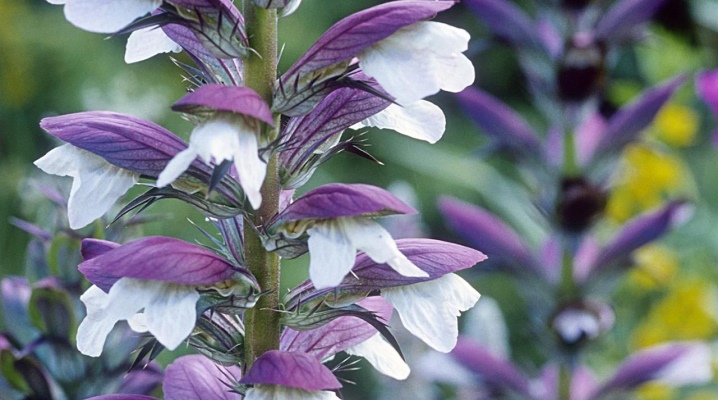
Acanthus, acanthus or "bear paw" belongs to herbaceous perennials. The plant is distinguished by extremely beautiful carved leaf plates of rather large sizes and high peaks of inflorescences. The flower is equally beautiful both in single plantings and in group ones.
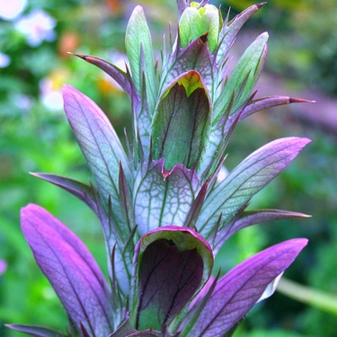
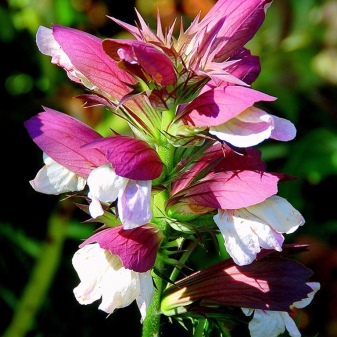
Peculiarities
Acanthus (acanthus) refers to ornamental deciduous plants, among which there are shrubs. Acanthus stems are straight, in low-growing varieties they reach 40 cm, and in tall ones - up to 2 m. The leaf plates are located on elongated petioles, forming a rather voluminous rosette. They can be feathery or dissected, with sharp tops. The color is dark green, often they have thorns.
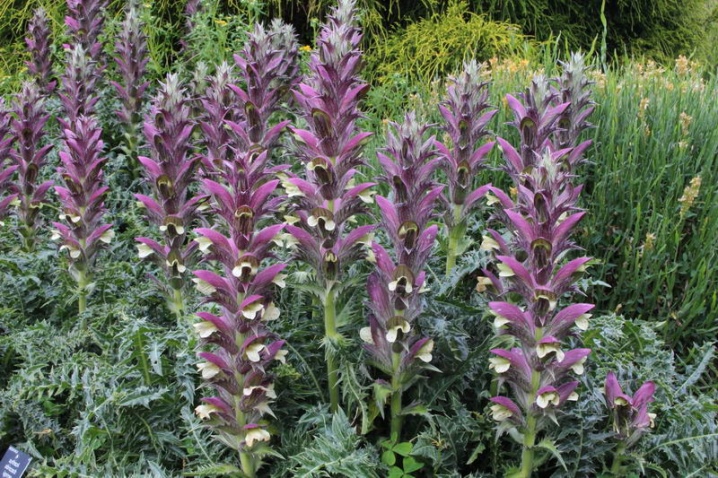
The flowers are small, bisexual, white, pinkish, red or purple tones with bright spiny bracts. Forms a tall spike-shaped inflorescence. Acanthus is suitable for growing in open soil and in containers. Keeps well when cut and is also suitable for dry bouquets. Flowering is long, its timing depends on the variety and climate of the region.
After the plant has faded, the pod fruits ripen, which can shoot seeds up to 10 m.
In the same place, an acanthus bush can grow for about 10 years. Most varieties are frost-resistant.
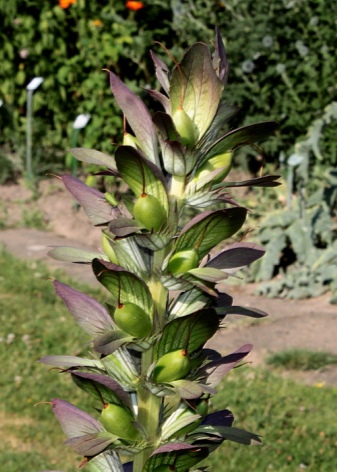
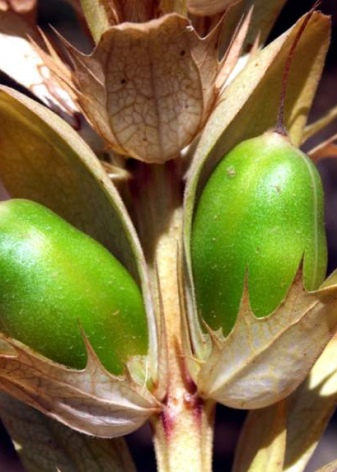
Types and varieties
Acanthus has a rather large species abundance, many varieties are cultivated in horticulture, and some as indoor plants. Mostly in greenhouses, thermophilic plant species are grown: dull and badian-leaved.
Acanthus blunt has other names - mollis or soft. The plant does not differ in special height and reaches 70 cm, although in the natural environment it can grow up to 150 cm. Large leaf plates are 30-60 cm long and 7-15 cm wide, form a fairly voluminous basal rosette, painted in dark green. The leaves have a beautiful shape, they are roughly cut with a shiny surface. Unlike other species, soft acanthus is characterized by the absence of thorns.
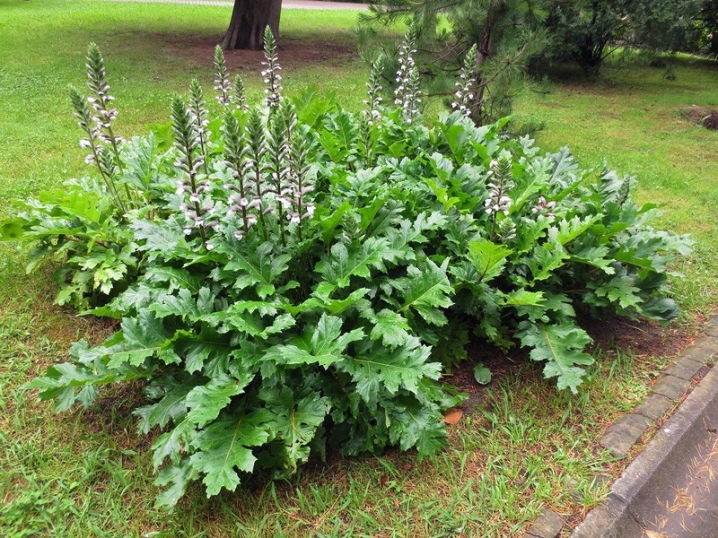
The stem of the plant is straight; it has a long apical inflorescence-spike 20-40 cm in length. The corolla of the flower is about 5 cm in size and is colored white with purple veins. Bracts of a dark shade of lilac or pink, ovoid. This type is very often used in landscape design because of the sculptural shape of the leaf plates and beautiful inflorescences. Soft acanthus has several popular varieties.
Tasmanian Angel grows up to 50-70 cm. The leaf plates are large (length 30-60 cm, width 5-15 cm), decorated with edging and white spots. "Tasmanian Angel" blooms with whitish buds with purple veins that form paniculate inflorescences. It is characterized by moderate growth and frost resistance, it should be covered for the winter, especially young bushes.
The plant feels fine in urban conditions, but prefers well-lit places with light fertile soil.
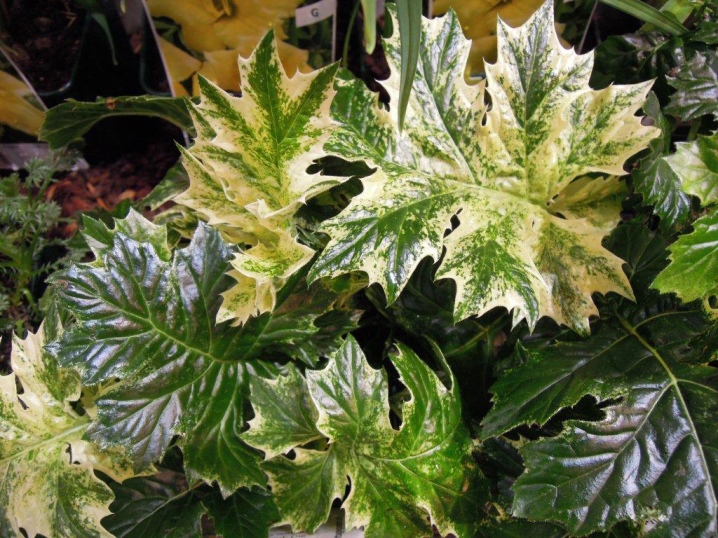
Whitewater differs in rather large variegated leaves of an arched appearance, in length they can grow up to 90 cm. The cut edges of the leaf plates give the plant a spectacular look. In height, the bush can reach a maximum of 90-120 cm, and in width - about 90 cm. The inflorescences are creamy pink, less often white.For growth, he prefers shady areas with good moisture; it is optimal to plant a plant under trees.
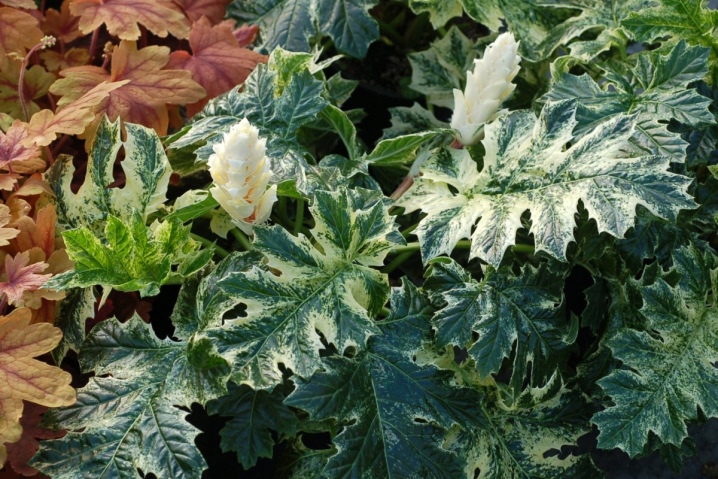
- Mornings Candle possesses white spike-shaped inflorescences, bracts are painted in a purple tone, spiked. The leaves are large in size with a glossy surface and lobed shape, slightly covered with thorns. The variety is suitable for growing in containers, it is also used for cutting. She needs shelter for the winter.
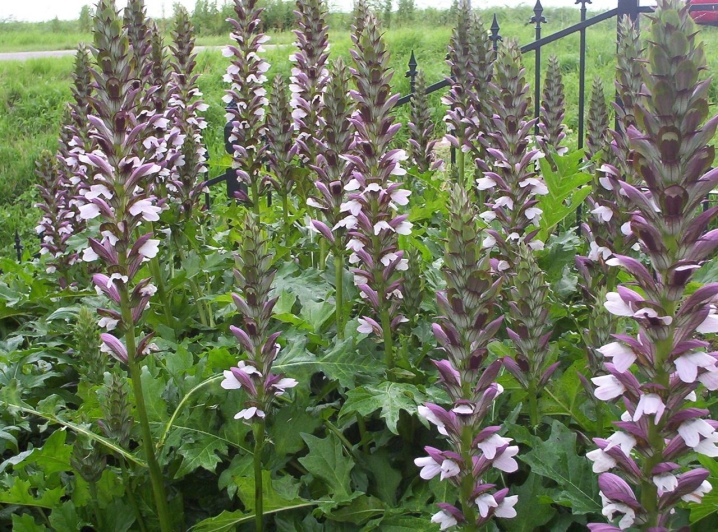
Badian-leaved or mountain acanthus is quite often grown in greenhouses or as a pot plant. This evergreen perennial can grow up to 1.5-2 m. The leaves of the plant are glossy and smooth to the touch, dark green in color. A beautiful appearance is added to them by prickly dissections along the edges. The length of the plate is 20-30 cm, and the width is 6-10 cm.
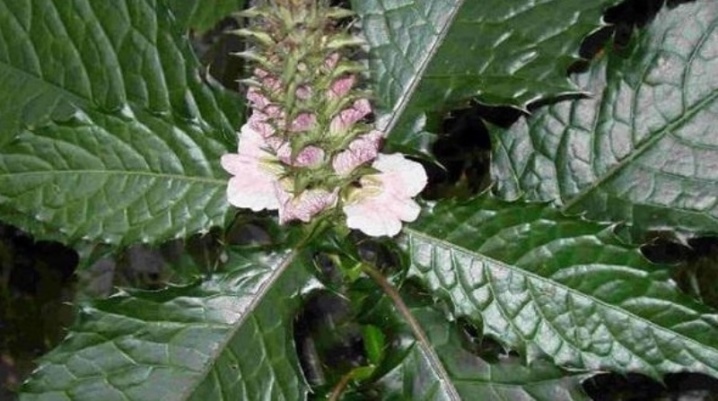
Long inflorescences form from large white-lilac buds growing singly in the axils of the bracts. For growth, the species prefers light and warm places, although in the heat it needs light shading. In nature, the plant thrives in the brackish water of mangrove groves in the Pacific Islands and the coastal areas of the Indian Ocean.
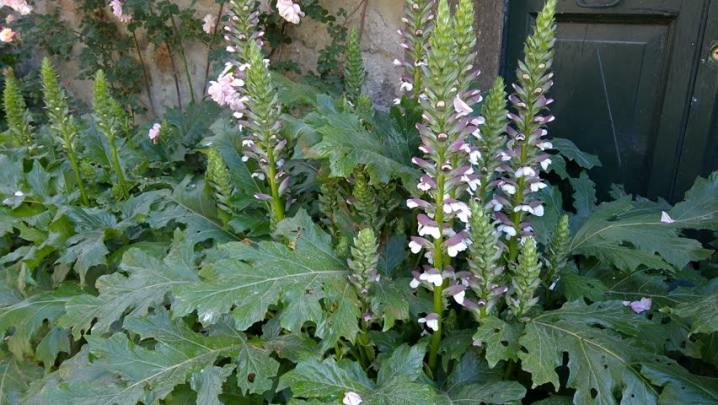
Acanthus prickly or sharp is most often planted in garden plots as an ornamental plant. Under natural conditions, the flower can be found in Mediterranean countries, where it grows up to 80-150 cm. A characteristic feature of the representatives of this species is the color of the petals: the upper ones are purple, and the lower ones are painted white.
Stipules and leaf plates are covered with thorns, resembling a thistle in appearance. The flowering period occurs in mid to late summer.
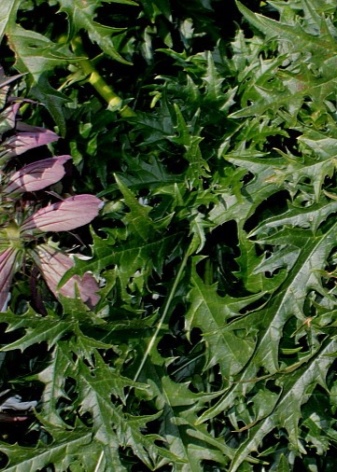

The species has a garden shape with strongly thorny leaves - acanthus is the most thorny. It belongs to one of the largest representatives of the genus, leaf plates grow up to 90 cm. They have a serrated shape with elongated thorns at the edges of the leaves. The plant also differs in such a property as winter hardiness. This variety blooms in August with light mauve and white numerous buds.
Balkan or Hungarian acanthus has the highest frost resistance of all species, but also blooms later than all. A characteristic feature of this type are leaf plates with deep cuts and lobes, which narrow towards the base. They are dull green in color, grow up to 60 cm in length, and differ in the absence of thorns. The buds are painted in a white-pink tone, the bracts are purple.
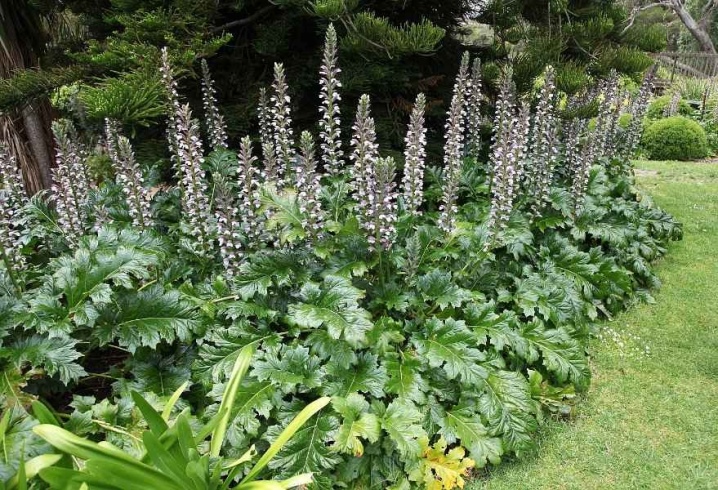
Diascorida is a rare species that was discovered not very long ago in a mountainous area near Yerevan. The plant has whole leaf plates and elongated purple inflorescences.
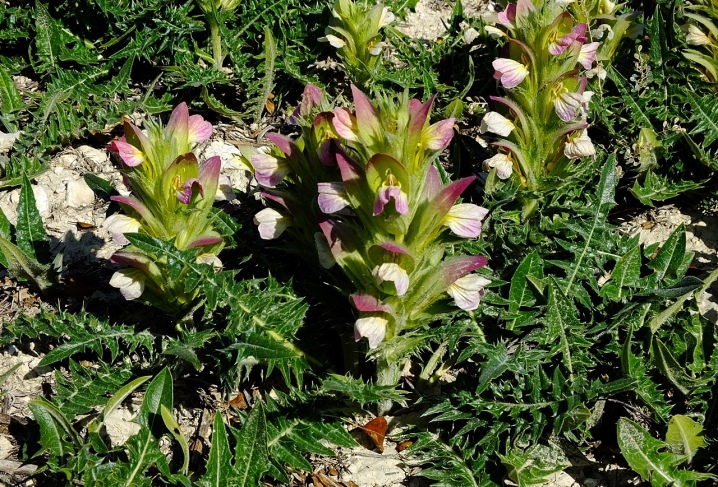
How to plant?
Acanthus does not tolerate transplants, so the planting site should be chosen taking into account all plant preferences. A well-lit area, protected from drafts, and also with a restriction for the roots, is optimal, since they can grow very much. It is also necessary that there is enough free space around the bush, because as it grows, the acanthus acquires a rather voluminous shape. The soil suitable for planting is light and preferably with good moisture permeability, not acidic. You can make a suitable composition yourself. For this you need to take:
1 part of humus;
1 part peat;
1 part of sod land;
0.5 parts of sand.
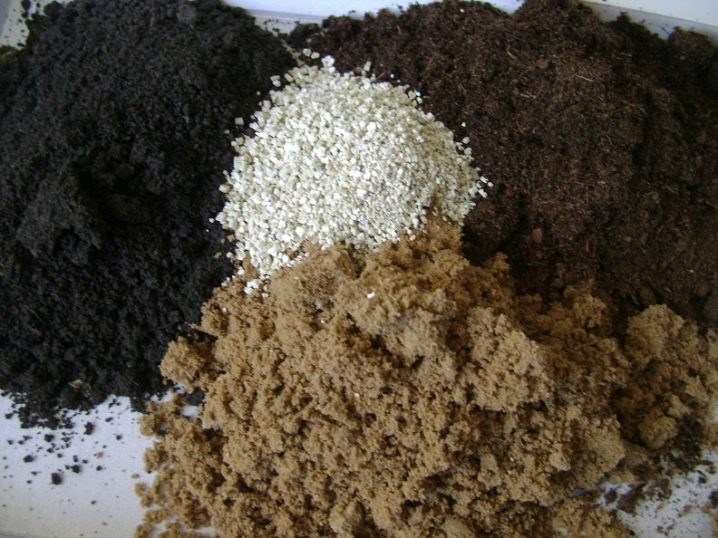
The plant definitely needs good drainage, otherwise it may die from excess moisture. Drainage is poured into the holes, then a layer of the mixture, and a bush is placed on top. Sprinkle with earth and moisten. Acanthus is thermophilic, so many gardeners grow it in tubs and take it indoors for the winter.
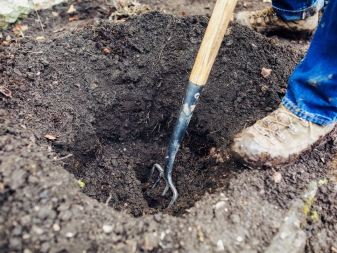

Correct care
The plant is not particularly whimsical and does not need special care. He needs weeding, loosening and mulching, which will help maintain the appearance of the bush and build up green mass. Watering is best done with warm water; in the summer, two abundant humidifications per week are enough for him.In the cold season, the plant is also watered, but much less often.
Acanthus may well tolerate short-term droughts, this does not affect its appearance, you just have to make sure that the ground around the bush does not dry out.

You need to feed the plant periodically (once every 2 weeks), starting in March and ending in September. For this, complex mineral dressings are used. Young bushes need shelter for the winter with spruce branches or agrofibre. If the plant freezes, the next flowering will be poor. An adult acanthus is able to tolerate winter well, so it is not necessary to cover it. Acanthus is distinguished by its rapid growth and capture of vast territories, even if other plants grow on them. To limit its spread, you can use limiters that are dug into the soil around the plant. These can be boards or slate pieces.
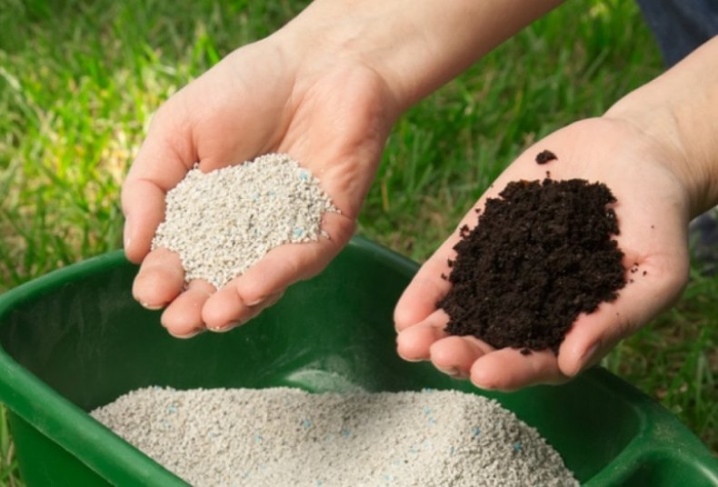
Diseases and pests
Acanthus has good resistance to disease and parasite damage. However, with excessive humidity, it can suffer from powdery mildew (the appearance of a whitish bloom on the leaf plates). In case of damage, the diseased parts are removed, and the plant is sprayed with fungicides. For prevention purposes, it is worth periodically thinning the flower so that air has access to the middle of the bush. Also, at high humidity, snails or slugs may appear on the plant, they are collected mechanically and watering is adjusted.


Reproduction methods
Dilute acanthus in several ways:
seeds;
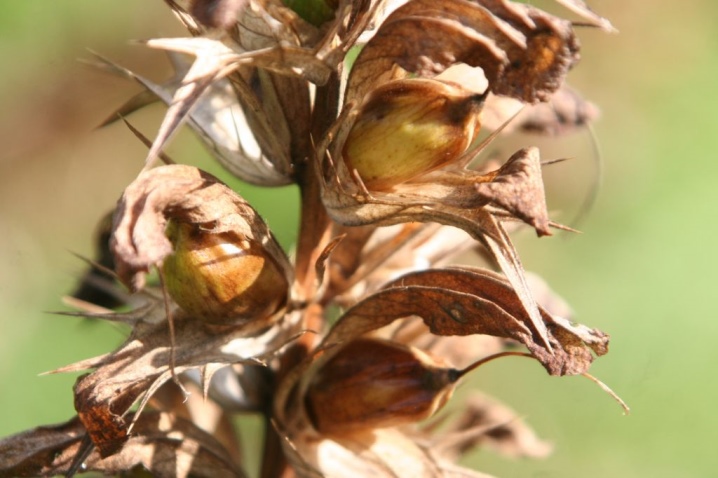
cuttings;
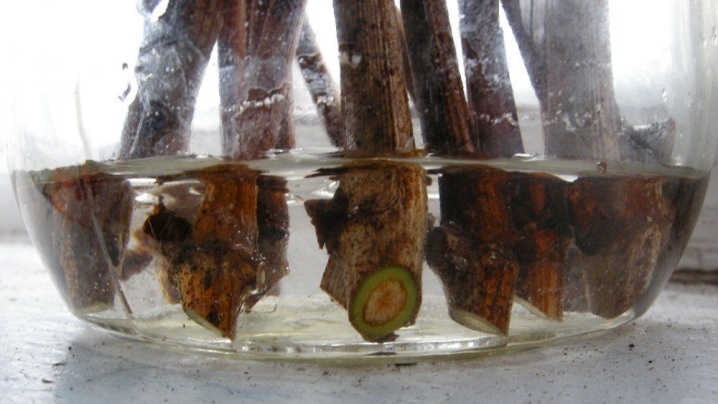
dividing the bush;

- root processes.
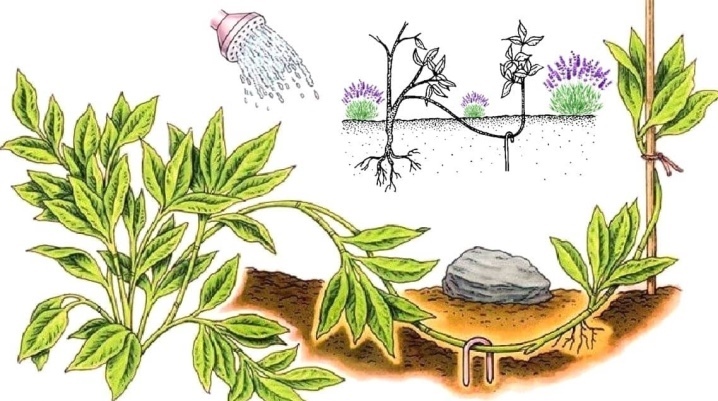
The seed method is used if fresh seeds are available. They are amenable to scarification, that is, the hard shell is scraped off, then soaked in water (with the addition of a stimulant) for 2-3 days. It is worth keeping it warm if possible. Seeds are sown in a container with loose soil, covered with foil and kept in a dark place for a week.
When sprouts appear, the container is rearranged to the light and the cover is gradually removed. Watering should be moderate. As the seedlings grow, they dive, and are planted in open soil in late May - early June, when the threat of night frosts has finally passed. A distance of 60-80 cm is maintained between the bushes.
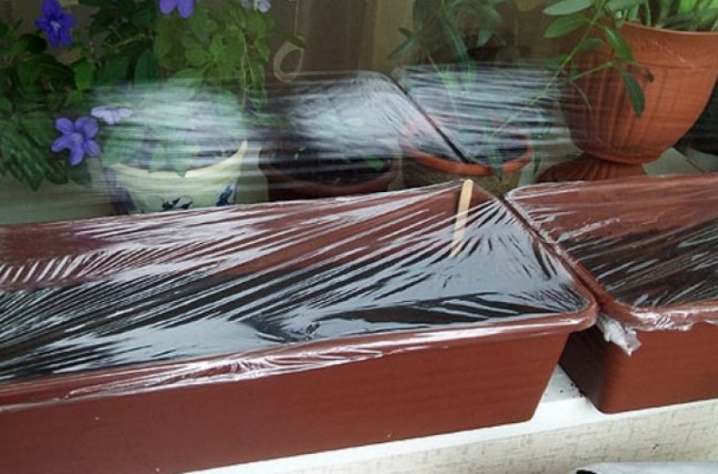
You can sow acanthus seeds directly into open soil in the spring. Caring for them will consist of regular moistening and weeding.
Propagation by cuttings is carried out as follows:
cuttings are cut into a length of about 15-20 cm, the lower cut must be done under the kidney itself;
leaves, except for the apical ones, are removed;
planted in well-moistened sand and covered, maintaining a temperature of 20-25 ° C.
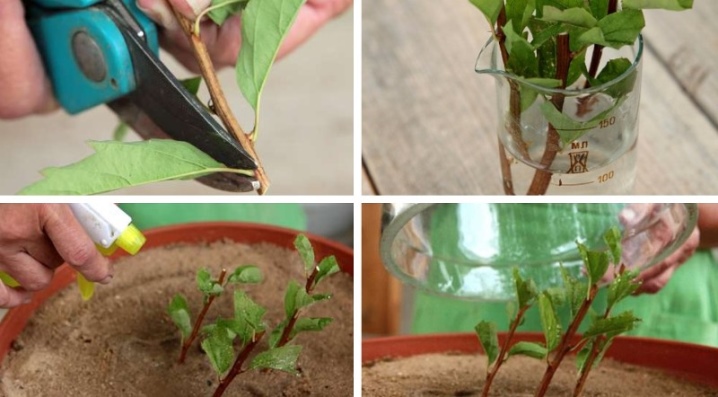
The cuttings take root rather quickly, and after 2-3 weeks the seedlings can be planted in open ground.
The division of the bush is carried out in the spring after the leaves grow, or in the fall. It is dug up, divided into several parts, and each is planted in a separate place of growth.

When breeding acanthus using root cuttings, do the following:
in the spring, a fragment is cut off from the fleshy rhizome with a knife;
divide it into several parts 5-8 cm long;
the upper cut is made horizontally, and the lower end is cut obliquely;
the container is filled with a mixture of peat and coarse sand and roots are placed in the grooves 5-8 cm so that the upper cut is at the level of the soil;
after the formation of 3-4 pairs of leaves, the sprouts can be planted in open soil.


Acanthus can be planted on the site without any problems, and it will become an elegant and unusual garden decoration for a long time.
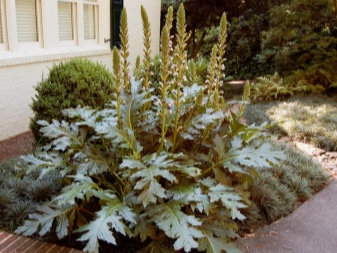

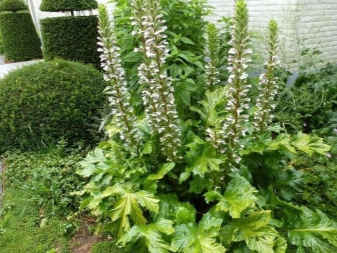
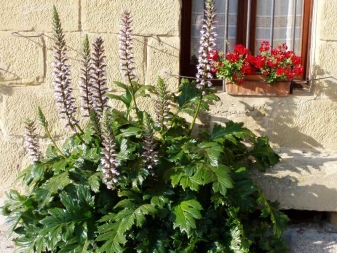
For how acanthus looks like, see the next video.







































































































My acanthus is soft, grown from seeds, for many years it gives only 3-4 leaves, has never bloomed, does not grow, a place with good lighting, the land is fertile. What can be wrong?
The comment was sent successfully.